Maintenance of an aquarium with an elevator in the Oceania Mall
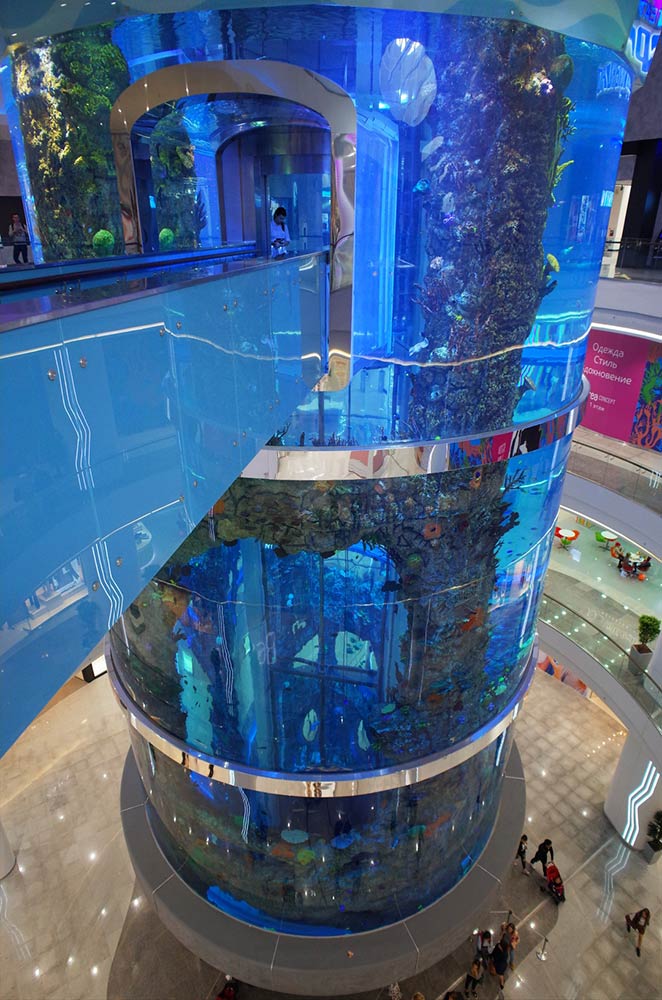
Service of large aquariums and oceanariums is one of the priority activities of Aqua Logo Engineering. Our and our trained teams of specialists service aquarium "Aquatica" in Kogalym, aquarium "Delphinia" in Novosibirsk, large aquariums in shopping malls in Kiev, Belgorod, Kursk. Since the opening of the oceanarium Moskvarium built by us at VDNKh we have been operating it for more than five years.
Our vast practical experience has allowed us to get an order to operate the world's tallest cylindrical aquarium with a sightseeing elevator inside. The aquarium was built by the famous American company ICM for the "Oceania" shopping mall on Kutuzovsky Prospekt in Moscow.
The visible part of the aquarium rises from the first to the fourth floor, while the technical and life-support systems are located below. The space between the two 24-meter-high transparent acrylic cylinders is filled with nearly one million liters of seawater. The outer cylinder has a diameter of 10 meters and the inner one 5 meters. Inside the aquarium, decorations imitating a coral reef are mounted throughout the entire height.
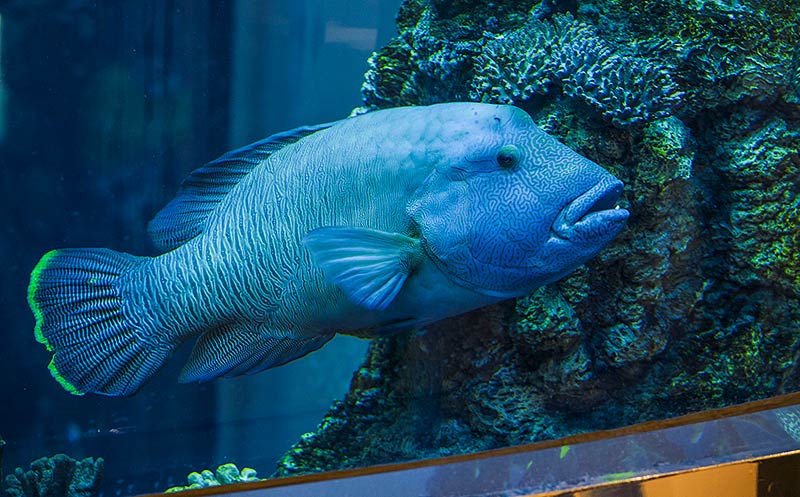 |
| Napoleon fish in their territory at an artificial coral reef |
Hundreds of colorful artificial corals make tropical fish feel protected, just like in a natural biotope. The aquarium is home to about 2,000 fish of 60 species. The natural differences in the behavior of fish, such as different shark species, clearly show up in such a tall aquarium. The white-spotted ones keep near the bottom, the reef blackheads mostly near the surface. The aquarium can be seen from afar, but the fish are easier to watch by the glass railing around the aquarium on levels 2, 3 and 4. The fish are best seen from the "underwater" elevator.
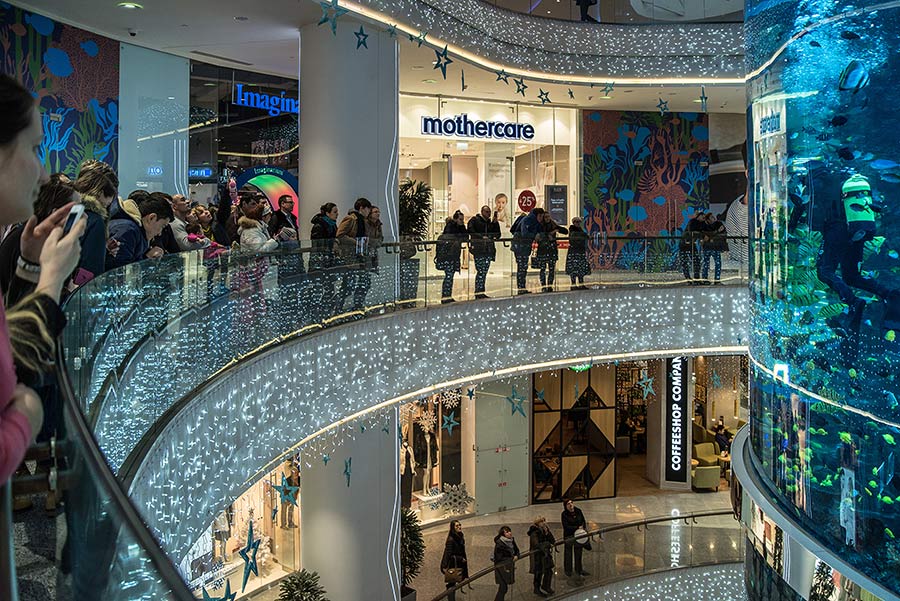 |
The third level is probably more convenient to view the fish than the floor above or below.
|
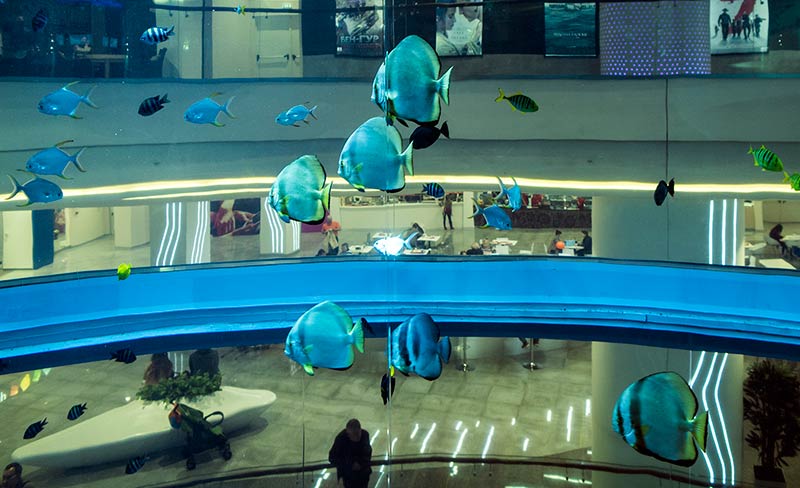 |
| A flock of Platax in the middle depths of the aquarium. View from the elevator |
Four times an hour, 12 people at a time can "surface" in a transparent capsule from the 20-meter depth of the tropical ocean zone, admiring the underwater beauty. During the three-minute ascent our charming guides tell the visitors about the fish in the aquarium, their behavior, food preferences, and their natural habitat. Every day the aquarium offers 42 such tours. More than 500 people daily join the mysteries of the depths.
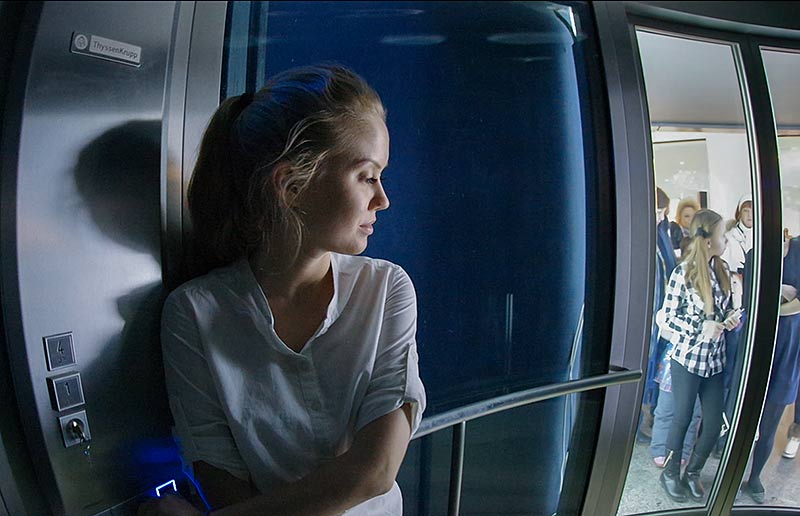 |
| Guide Anastasia Setkina is ready to receive another group of underwater travelers |
Everyone loves to feed the animals, or at least watch them feed. At Oceania, this happens several times a day. For the main feedings, our divers dive into the aquarium at 11 a.m. and 3 p.m. with a bag of assorted food and tools to clean all surfaces.
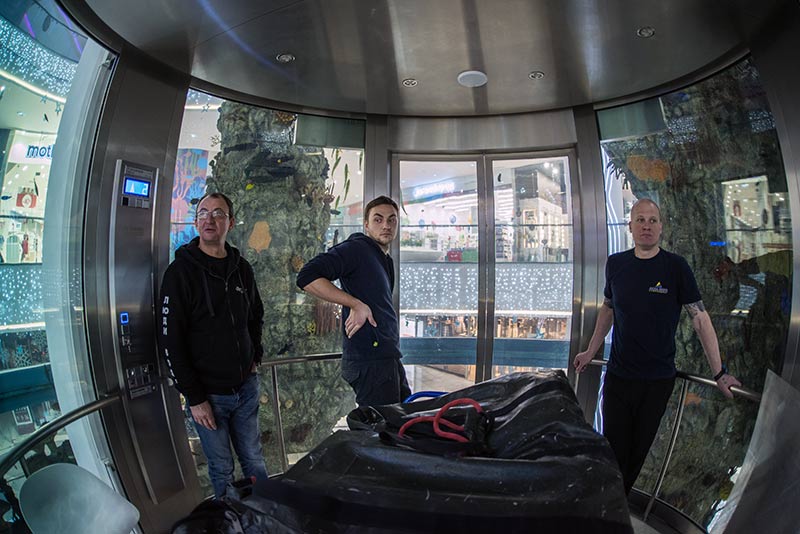 |
| Divers with equipment ascend to the dive site |
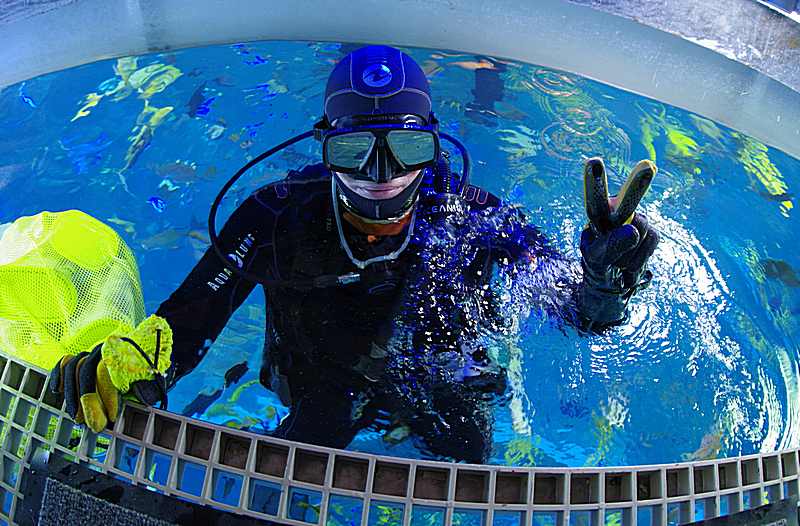 |
| Andrey Korolev before diving. In the bag there are containers with food for different fish |
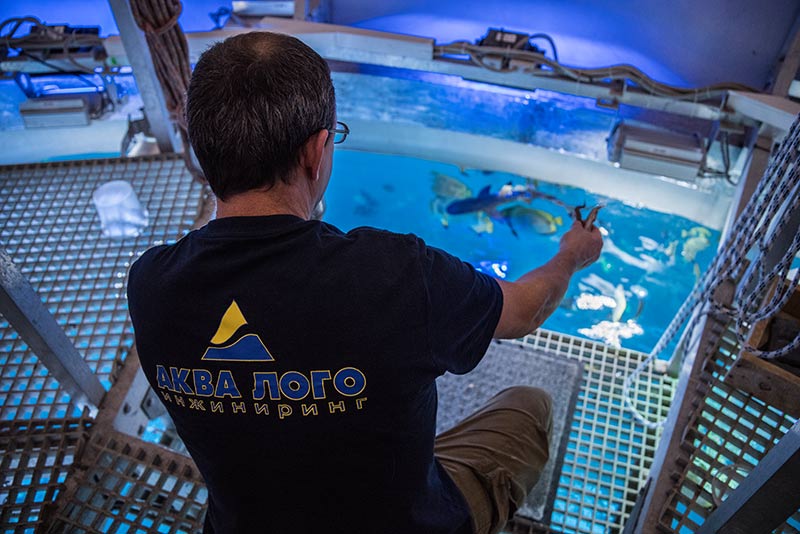 |
| Blackfin sharks waiting at the water's surface to feed |
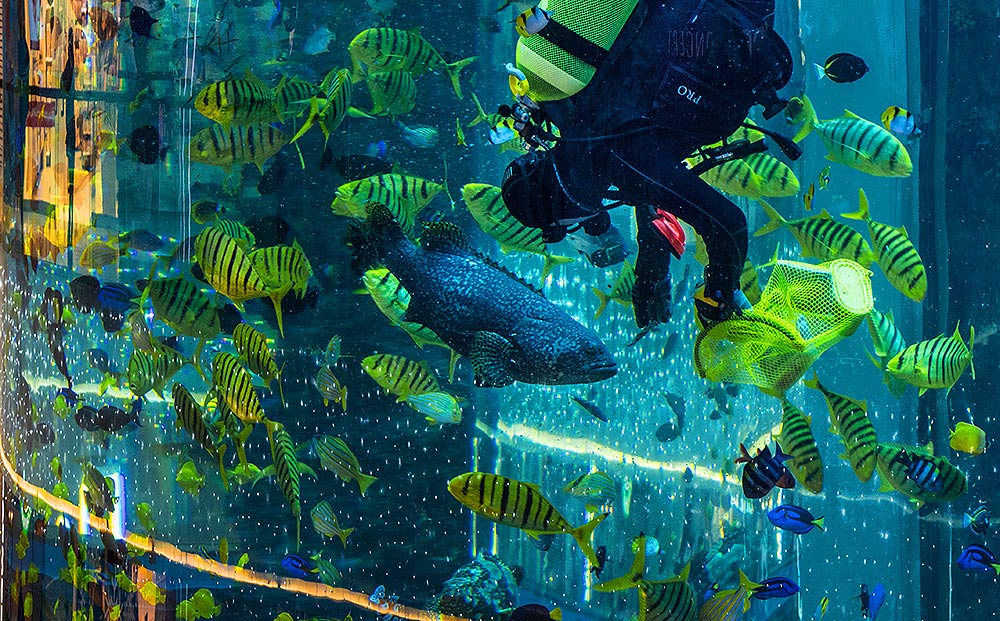 |
| Yuri Yamnikov feeds a giant little-eyed grouper |
The feeding process begins below the surface of the water. Remember? That's where the blackfin sharks live. Gradually the depth increases, there is less and less food. Some fish grab food instantly, others have to be persuaded to eat. Like the giant little-eyed grouper or the Napoleon fish. Yes, imagine, they are fed personally. To shelter moray eels, too, you have to swim up specially, so it does not go hungry. After about half an hour, it's time to get to the bottom species of sharks, the whitetip sharks.
 |
| Feeding whitefin sharks in the bottom part of the aquarium |
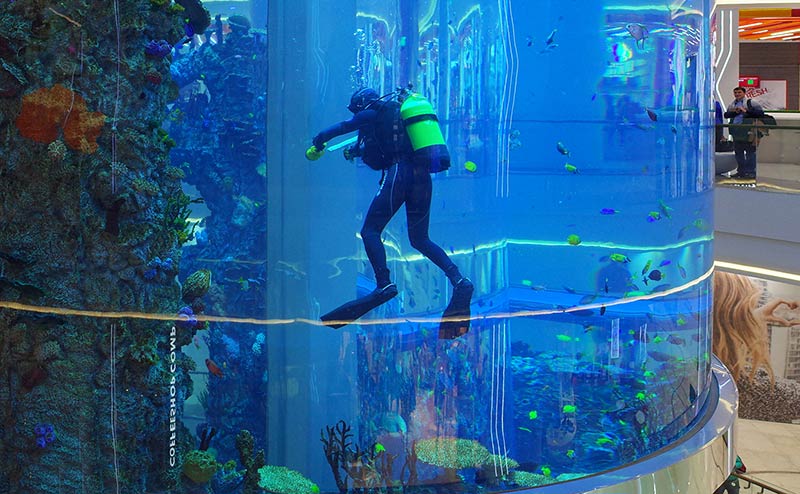 |
| The diver holds onto the wall of the aquarium with a suction cup and removes fouling on the glass with the scraper |
A bag of empty feed jars is sent to the surface, and a diver begins the painstaking work of cleaning hundreds of square meters of the walls of the aquarium, checking the condition of the fish. Each dive lasts almost an hour and a half and always attracts the attention of visitors.
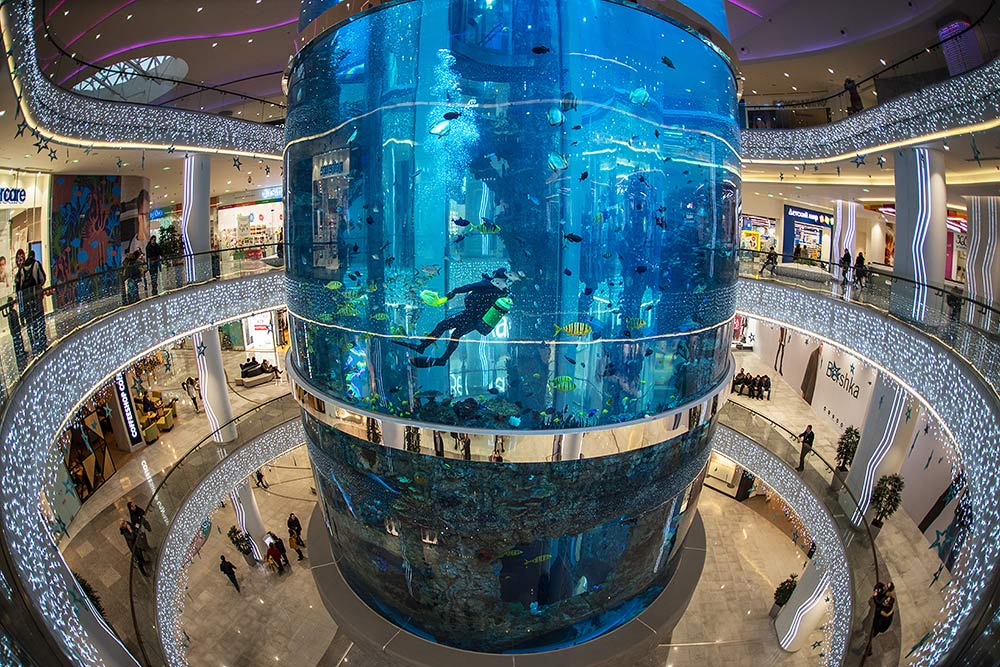 |
| The diver began to feed the fish, in a few minutes the audience will come to the aquarium |
Divers do the most physically demanding work within the framework of aquarium maintenance. No less responsible task is the management of the entire complex of life-support systems, control of water quality parameters.
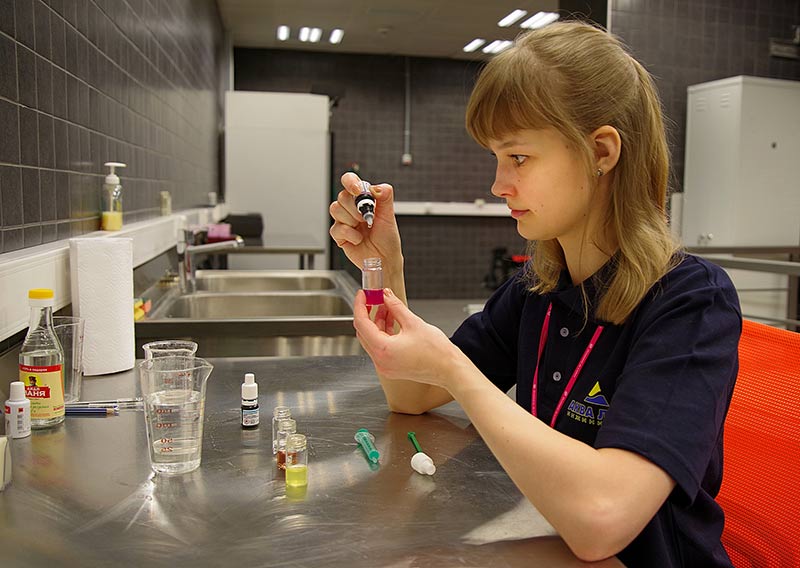 |
| Laboratory analysis of water quality |
After all, a marine warm-water aquarium is thousands of kilometers away from the nearest ocean. And it, just like a home aquarium, periodically needs a water change. Our specialists make seawater locally from purified Moscow tap water by adding salt in the required proportion.
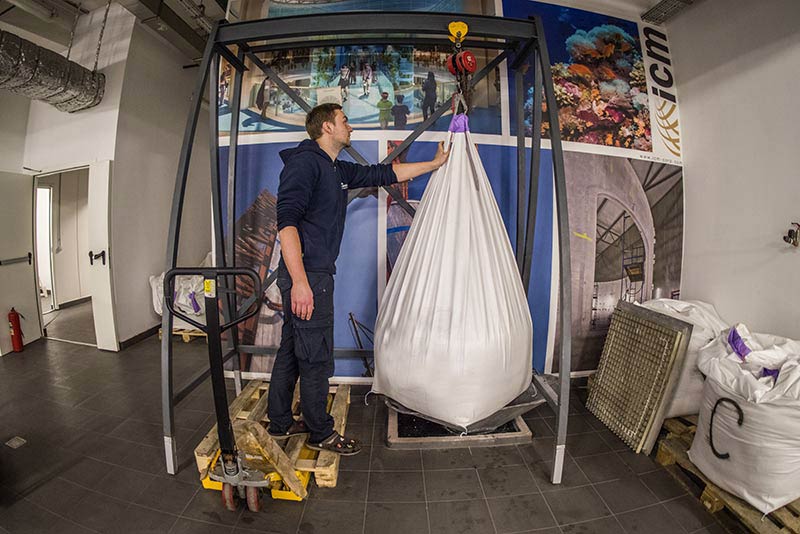
|
| Preparing for salting water |
A computerized dispatching system helps to keep track of the readings of many sensors for temperature, water level, and pump operation. Water quality is also monitored by laboratory methods.
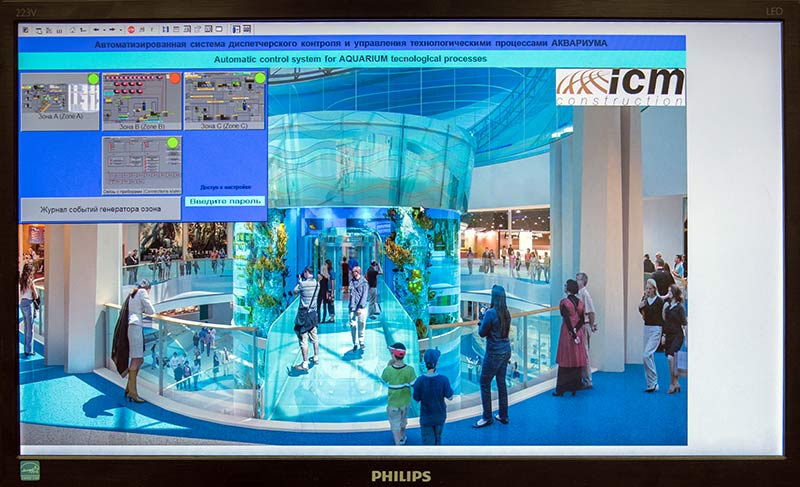 |
| Monitor of the dispatching system |
The biotechnology of large aquariums involves quarantining the fish. That is, the temporary keeping of fish separately from the others in small aquariums for a period of adaptation after delivery by plane from distant countries, from other aquariums. In quarantine aquariums, fish are also treated if the need arises.
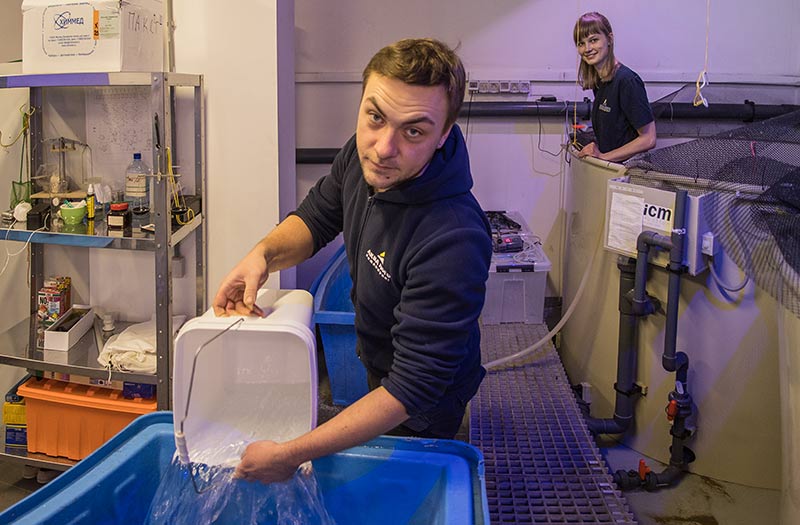 |
| Ichthyologist Egor Tsaplin prepares a fish treatment bath in the quarantine room |
All quarantine tanks and their life support systems are constantly maintained in working order. After all, the question of life and death in an aquarium is only a matter of hours. Any doubts about the functioning of the equipment require the immediate involvement of specialists to promptly resolve the issue.
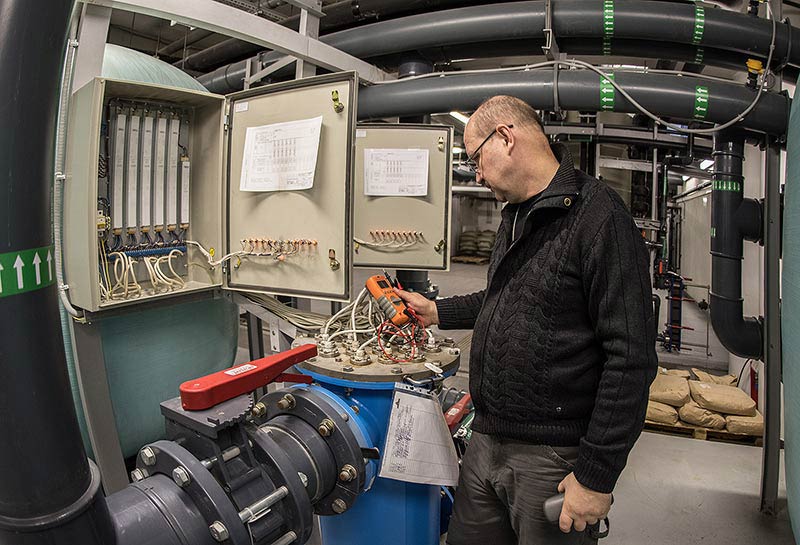
|
| Project Engineer Valery Bavin inspects the equipment of the housing supply systems |
Service personnel work around the clock. A clear schedule of duty is written out a month in advance, and it is always in a prominent place in the office of the service team.

|
| Aquarium maintenance team duty schedule |
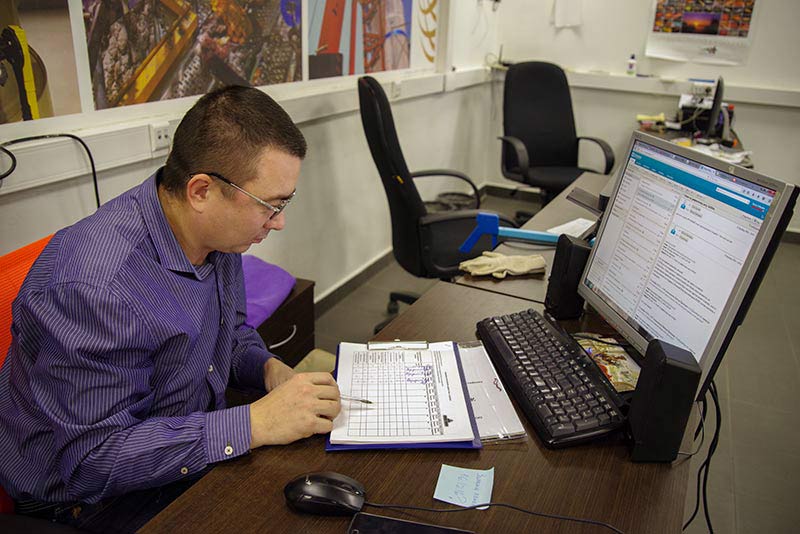 |
| Victor Prikhodko, Director of Aquarium Operations |
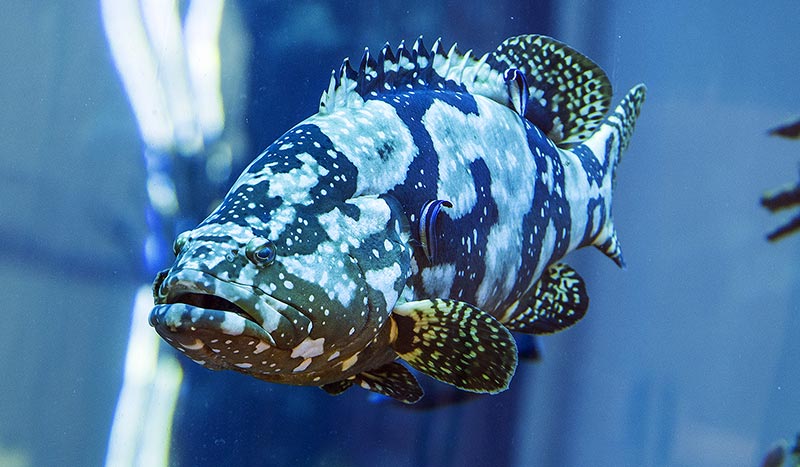 |
| Grouper |
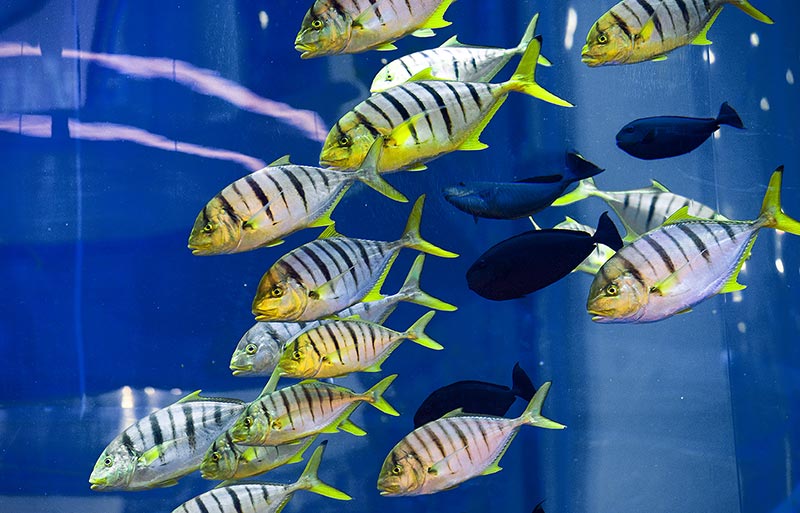 |
| Golden carangs - aquarium decoration |
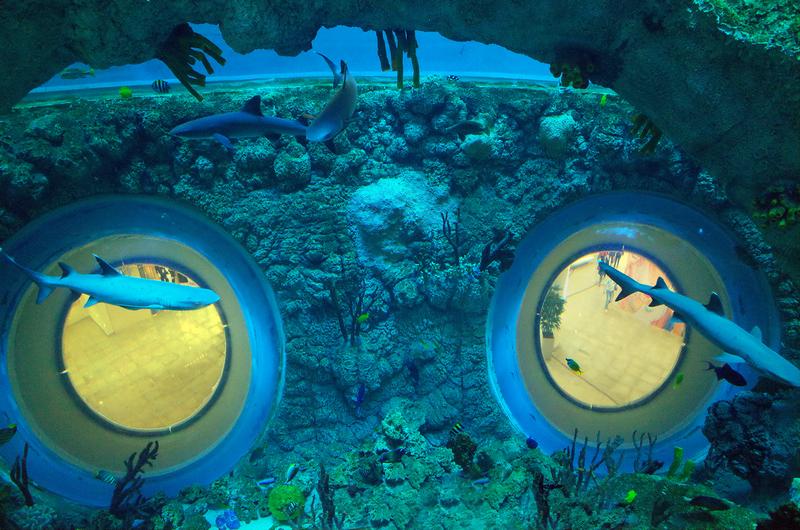 |
| Whitetip sharks in the basement of the aquarium |


























